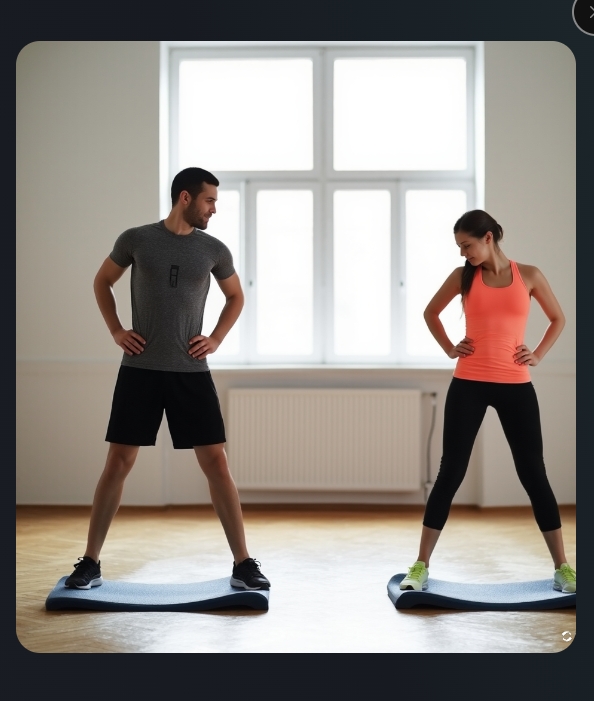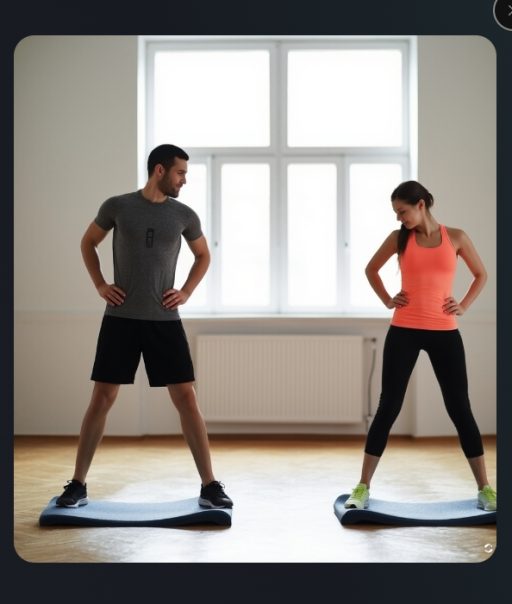
Home Workout Routines for All Fitness Levels. In today’s fast-paced world, finding time to hit the gym can be a challenge. Luckily, home workouts offer an effective and convenient alternative. Whether you’re a beginner, intermediate, or advanced fitness enthusiast, there’s a home workout routine tailored just for you. This guide will explore various exercises, routines, and tips to help you stay fit and healthy from the comfort of your home.
The Benefits of Home Workouts
Before diving into specific routines, it’s essential to understand the benefits of working out at home:
- Convenience: No need to commute; you can work out whenever you want.
- Cost-Effective: Save money on gym memberships and travel costs.
- Flexible: Adjust your schedule and workout duration to fit your needs.
- Privacy: Many people feel more comfortable exercising in their own space.
- Variety: You can mix and match workouts without being limited by gym equipment.
- Family Involvement: Home workouts can involve family members, turning fitness into a fun group activity.
Getting Started: Setting Up Your Home Workout Space
Creating an ideal workout environment at home can significantly enhance your exercise experience. Here are some tips for setting up your space:
- Choose a Designated Area: Find a quiet, open space where you can move freely without interruptions. A living room, basement, or spare bedroom can work well.
- Equip Your Space: Depending on your fitness level and goals, consider investing in some basic equipment like dumbbells, resistance bands, a yoga mat, or kettlebells. Even bodyweight exercises can be highly effective.
- Eliminate Distractions: Keep your workout area free of clutter and distractions, such as phones or televisions. If possible, create a space that’s solely dedicated to fitness.
- Create a Motivating Atmosphere: Use motivational posters, play your favorite music, or light scented candles to create a pleasant environment. Consider adding plants or a vision board to inspire you.
- Temperature Control: Ensure your workout area is well-ventilated and at a comfortable temperature, so you can focus on your exercises without distractions.
Home Workout Routines for All Fitness Levels
Beginner Workouts
For those new to fitness, it’s essential to focus on form and gradually build strength and endurance. Here’s a simple routine to get you started:
Routine: Beginner Full-Body Workout (30 minutes)
1. Warm-Up (5 minutes)
- Arm Circles: 1 minute
- Leg Swings: 1 minute (30 seconds per leg)
- March in Place: 3 minutes
2. Workout (20 minutes)
Perform each exercise for 30 seconds, resting for 30 seconds between exercises. Complete the circuit twice.
- Bodyweight Squats: Focus on keeping your chest up and knees behind your toes.
- Push-Ups: Start on your knees if necessary, ensuring your back remains straight.
- Plank: Hold for 20 seconds, keeping your body in a straight line from head to heels.
- Glute Bridges: Lie on your back, knees bent, and lift your hips towards the ceiling.
- Seated Rows: Using a resistance band, sit with legs extended and pull towards your torso.
3. Cool Down (5 minutes)
- Forward Fold: 1 minute
- Cat-Cow Stretch: 1 minute
- Child’s Pose: 1 minute
- Deep Breathing: 2 minutes
Intermediate Workouts
Once you’ve built a foundation, you can challenge yourself with more advanced movements and increase intensity.
Routine: Intermediate Full-Body Workout (45 minutes)
1. Warm-Up (5 minutes)
- Jumping Jacks: 1 minute
- High Knees: 1 minute
- Dynamic Stretches (lunges and torso twists): 3 minutes
2. Workout (35 minutes)
Perform each exercise for 45 seconds, resting for 15 seconds. Complete the circuit three times.
- Jump Squats: Explode upwards, landing softly to protect your knees.
- Push-Ups: Keep a tight core and don’t let your hips sag.
- Plank to Push-Up Position: Transition between forearm and standard plank.
- Alternating Lunges: Step forward with one leg, lowering your hips until both knees are bent at about a 90-degree angle.
- Tricep Dips: Use a sturdy chair, lowering your body until your elbows are at a 90-degree angle.
- Bicycle Crunches: Engage your core and alternate bringing your opposite elbow to knee.
3. Cool Down (5 minutes)
- Standing Quad Stretch: 1 minute
- Chest Stretch: 1 minute
- Seated Forward Bend: 1 minute
- Deep Breathing: 2 minutes
Advanced Workouts
For seasoned fitness enthusiasts, advanced routines can enhance strength, endurance, and overall performance.
Routine: Advanced HIIT Workout (30 minutes)
1. Warm-Up (5 minutes)
- High Knees: 1 minute
- Butt Kicks: 1 minute
- Arm Swings: 1 minute
- Dynamic Leg Swings: 2 minutes
2. Workout (20 minutes)
Perform each exercise for 1 minute, resting for 15 seconds. Complete the circuit four times.
- Burpees: A full-body exercise combining a squat, push-up, and jump.
- Plyometric Lunges: Jump to switch legs, landing softly.
- Push-Up to Side Plank: Alternate between a push-up and rotating into a side plank.
- Mountain Climbers: Quickly alternate bringing your knees to your chest in a plank position.
- Russian Twists: Sit on the floor, lean back slightly, and rotate your torso side to side.
- Plank Jacks: In a plank position, jump your feet out and back together.
3. Cool Down (5 minutes)
- Cobra Stretch: 1 minute
- Pigeon Pose: 1 minute (30 seconds per side)
- Seated Hamstring Stretch: 1 minute
- Deep Breathing: 2 minutes
Tips for Success
Stay Consistent
Consistency is key to achieving fitness goals. Create a workout schedule that works for you and stick to it. Consider using a planner or fitness app to track your progress. You might aim for at least 150 minutes of moderate aerobic activity each week, along with strength training on two or more days.
Listen to Your Body
Pay attention to how your body responds to each workout. If you experience pain or discomfort, modify the exercise or take a rest day. Recovery is just as important as the workout itself. Consider incorporating rest days and low-intensity activities like walking or stretching.
Mix It Up
To avoid plateaus and keep your workouts interesting, change your routine regularly. Experiment with different types of exercises, such as yoga, Pilates, or dance workouts. You could also explore outdoor activities like hiking or biking.
Set Goals
Establish realistic and measurable fitness goals. Whether it’s increasing your push-up count or running a certain distance, setting goals can motivate you to stay on track. Use the SMART criteria (Specific, Measurable, Achievable, Relevant, Time-bound) to structure your goals effectively.
Stay Hydrated and Nourished
Hydration and nutrition play vital roles in your fitness journey. Ensure you drink plenty of water before, during, and after workouts, and fuel your body with nutritious foods. Consider meal prepping healthy snacks and meals to keep you energized throughout the day.
Incorporating Cardio and Flexibility
In addition to strength training, don’t forget to include cardiovascular and flexibility exercises in your routine. Here are a few suggestions:
Cardio Options
- Jump Rope: A great full-body workout that enhances coordination and endurance.
- Dancing: Fun and effective, dancing can elevate your heart rate while improving mood.
- High-Intensity Interval Training (HIIT): Short bursts of intense exercise followed by rest can provide a robust cardio workout in a short time.
Flexibility and Mobility
- Yoga: Practicing yoga improves flexibility, strength, and mental clarity. Many online platforms offer guided yoga sessions tailored for different skill levels.
- Dynamic Stretching: Incorporate dynamic stretches before your workouts to enhance mobility. Think leg swings and arm circles to get the blood flowing.
- Foam Rolling: Use a foam roller post-workout to relieve muscle tension and improve recovery. This practice can help prevent soreness and increase blood flow to the muscles.
Overcoming Common Challenges
While home workouts offer numerous benefits, they also come with unique challenges. Here are some common obstacles and strategies to overcome them:
Motivation
It can be difficult to stay motivated when working out at home. To combat this, set clear goals and reward yourself for reaching milestones. Consider joining online fitness communities for support and inspiration.
Limited Space
If you have limited space, focus on bodyweight exercises that require minimal room. Use a yoga mat for comfort and explore exercises that can be done in small areas, like push-ups, squats, and lunges.
Equipment Limitations
While equipment can enhance your workouts, many effective exercises require little to no gear. Use your body weight for resistance, or create makeshift weights using household items (e.g., water bottles or backpacks filled with books).
Boredom
Keep your workouts fresh by varying your routine and trying new exercises. You could also consider following online workout videos, which often introduce new techniques and styles to your routine
Creating a Balanced Weekly Workout Plan
A balanced workout plan incorporates strength, cardio, flexibility, and rest. Here’s an example of how to structure your weekly workouts:
Sample Weekly Workout Plan
Monday: Full-Body Strength Training (45 minutes)
- Warm-Up: 5 minutes (dynamic stretches)
- Circuit (3 rounds):
- Bodyweight Squats: 12-15 reps
- Push-Ups: 8-12 reps
- Bent-Over Dumbbell Rows: 12-15 reps
- Plank: 30 seconds
- Glute Bridges: 15 reps
- Cool Down: 5 minutes (static stretches)
Tuesday: Cardio and Core (30 minutes)
- Warm-Up: 5 minutes (jumping jacks)
- Cardio (20 minutes):
- 1 minute of high knees, followed by 30 seconds of rest (repeat for 20 minutes)
- Core Workout (5 minutes):
- Bicycle Crunches: 30 seconds
- Plank with Shoulder Taps: 30 seconds
- Russian Twists: 30 seconds
- Cool Down: 5 minutes (gentle stretching)
Wednesday: Active Recovery/Yoga (30-45 minutes)
- Choose a yoga video or routine focused on flexibility and relaxation. Look for sessions that include poses like downward dog, warrior poses, and seated stretches.
Thursday: Lower Body and Cardio HIIT (30-45 minutes)
- Warm-Up: 5 minutes (dynamic leg swings)
- Circuit (4 rounds):
- Jump Squats: 30 seconds
- Alternating Lunges: 30 seconds
- High Knees: 30 seconds
- Mountain Climbers: 30 seconds
- Rest: 30 seconds
- Cool Down: 5 minutes (leg and hip stretches)
Friday: Upper Body Strength and Core (45 minutes)
- Warm-Up: 5 minutes (arm circles and shoulder rolls)
- Circuit (3 rounds):
- Push-Ups: 10-15 reps
- Triceps Dips: 10-15 reps
- Dumbbell Shoulder Press: 12-15 reps
- Plank: 30 seconds
- Side Plank: 20 seconds each side
- Core Workout (5 minutes):
- Leg Raises: 10-15 reps
- Plank Jacks: 30 seconds
- Cool Down: 5 minutes (upper body stretches)
Saturday: Cardio and Flexibility (30-45 minutes)
- Cardio (20-30 minutes): Choose an activity like jogging, cycling, or an online dance workout.
- Flexibility: Spend 10-15 minutes stretching all major muscle groups, focusing on areas that feel tight.
Sunday: Rest Day
- Allow your body to recover. Engage in light activities like walking, leisurely bike riding, or gentle stretching.
Adjusting Your Plan
Feel free to modify this sample plan to suit your fitness level and schedule. If you’re starting, you may want to reduce the intensity or duration of some workouts. Conversely, if you’re advanced, you can increase weights, repetitions, or workout duration.
Staying Motivated and Accountable
To maintain motivation and accountability, consider the following strategies:
Track Your Progress
Keep a fitness journal or use a fitness app to log your workouts, monitor your progress, and celebrate achievements. Tracking your improvements can boost motivation and help you stay focused on your goals.
Find a Workout Buddy
Working out with a friend or family member can make exercise more enjoyable and hold you accountable. You can share your goals, encourage each other, and even do workouts together over video calls.
Join Online Challenges
Participating in fitness challenges can provide structure and foster a sense of community. Many social media platforms offer challenges that can keep you engaged and motivated.
Reward Yourself
Set milestones and reward yourself when you achieve them. This could be a treat, new workout gear, or a fun activity. Rewards help create positive reinforcement and keep you excited about your fitness journey.
Conclusion
Home workouts can be tailored to any fitness level, making them an excellent option for everyone. By creating a designated workout space, choosing the right routines, and maintaining consistency, you can achieve your fitness goals from the comfort of your home.
Remember to listen to your body, stay motivated, and most importantly, have fun with your workouts! With the right mindset and dedication, you can enjoy a healthier lifestyle without ever stepping foot in a gym.
Whether you’re a beginner just starting out or an advanced athlete looking to maintain your edge, there’s a home workout routine that fits your needs. Start today, and embrace the journey to a fitter you!



